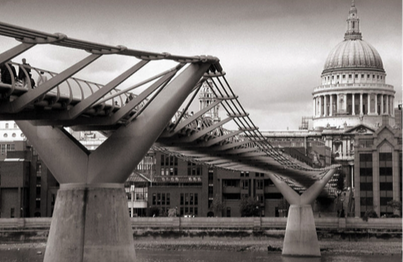Let the following three examples remind us of how bad it can go. These projects have served the public in amazing ways after they became fully operational. But let’s not forget that they started off as failures.
Heathrow Terminal 5
At the time of opening in March 2008, only 85% of project deliverables had been completed. As construction work was running late, IT testing and staff training had also been delayed. In spite of the delays, it was decided to go ahead with the original opening date without deferring it. Terminal 5 was a big deal and moving the opening date would have been a big deal too. As a result of the delay there was less time available for hands-on training, dress rehearsals and fixing any problems arising from testing. Cutting short the testing and simulation activities had severe consequences.
On the opening day itself, staff had difficulties parking, moving around the terminal and operating the systems. But worst of all was the failing baggage handling system. On the first day 15,000 bags were lost and 35 flights were cancelled as the airport struggled to clear the baggage backlog. By 5pm passengers were told to travel without luggage if they still wanted to fly.
In the first week 500 flights were cancelled, 23,000 bags had been misplaced and hundreds of passengers had been left stranded. MPs described the opening as a national humiliation.
Although Terminal 5 was a much bigger project than most of us will ever get involved in, we can still learn from its lessons. Making a project operationally ready should never be underestimated or compromised. Testing, training, dry runs and handovers are essential activities on most projects.
The Millennium Bridge
The bridge had been hit by a phenomenon called synchronous lateral excitation caused by the movement of the thousands of people who crossed the bridge by foot on its opening day. Whereas lateral excitation was a known phenomenon, the engineers had failed to understand that even when people walk randomly, a certain percentage is bound to “match step” and thereby cause lateral motion in the bridge.
As a result of this oversight the bridge was closed to the public just two days after its initial opening. Engineers spent 19 months reinforcing the structure with 91 dampers designed to reduce the movement. When the bridge was reopened in 2002 it had cost an additional £5million ponds.
Although the Millennium Bridge is a beautiful piece of architecture, let’s remind ourselves of the importance of proper risk management. Some risks are highly unlikely but if they were to happen the impact would be severe. It’s the team’s responsibility to respond appropriately to these risks. In the case of the Millennium Bridge it seems the risk of lateral excitation had been identified, but not appropriately addressed.
Sydney Opera House
The architect, Jørn Utzon was appointed in 1957 with the construction of the Opera House starting in 1959. The goal was to complete the building in four years with a budget of AUS $7 million. But the project took a very different turn. It ended up taking 14 years to complete and cost a whopping AUS $102 million. A number of things went wrong that could be classified as project management failures:
- There was no detailed plan in place when the project started and there was no project manager
- The project was deliberately underestimated by its proponents to get the project approved and started
- The design of the building was not completed by the time construction got underway. Utzon protested but for political reasons the government was pushing for the construction to start.
- Major changes to the requirements were approved after construction had started, moving from two to four theatres. This meant that the designs, which were already challenging for the construction team to build, had to be modified on the go.
- The Danish architect resigned from the project mid way through as he felt his creative freedom was restricted. The government had started to withhold payments as it felt costs were spiralling out of control.
- Redesigns, underestimates and cost overruns continued until Queen Elizabeth II finally inaugurated the Opera House in 1973.
Human ingenuity is not enough to make projects happen. We need proper project management to control the unknown elements. We also need excellent leadership to create a unified team of designers, engineers, clients and stakeholders, who act from a place of trust and honesty and who do what’s in the project’s best interest. Thankfully the world of project management has evolved since the 60ties and 70ties and is now a recognised practice. But we need to keep reminding ourselves of the failures of the past so that they are not repeated.
If you liked this post, you may also like:
Project Leadership - 20 essential tips
Why do projects continue to fail - and what can we do about it?
The world needs your genius and it needs your leadership!
10 guidelines for estimating project effort
Innovative leaders ask powerful what-if questions
Is the Ion Triangle Outdated?











 RSS Feed
RSS Feed